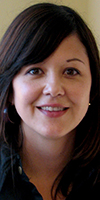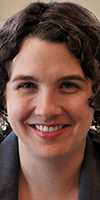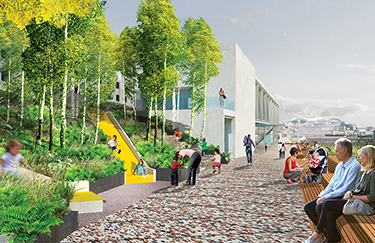|
Subscribe / Renew |
|
|
Contact Us |
|
| ► Subscribe to our Free Weekly Newsletter | |
| home | Welcome, sign in or click here to subscribe. | login |
Real Estate
| |
 |
November 20, 2014
Thousands of public comments help shape the design
EnviroIssues

Tam
|

Stensland
|
Most of us have dreams and aspirations for the places in our communities that mean the most to us. For many Seattleites, the central waterfront is one of those places.
It evokes memories of the past and inspires ideas for the future. Seattle’s waterfront means something different to everyone.
Many people are eager about what the future holds for this unique space that has been carved out over hundreds of years by business, industry, history and recreation. For some, family histories are inextricably linked to the shores of the Salish Sea and still others associate the waterfront with cherished childhood memories. Keeping the waterfront rooted in what has always made it special and enhancing those qualities for future generations is something many Seattleites have a vested interest in.
Listening effectively
In a town known for its public process, the exciting challenge of public involvement is this: How do we bring together many passionate voices in a meaningful way, reduce barriers to participation so that more people see their place at the table, and keep a sense of momentum and progress?
Effectively engaging people across a diverse group of perspectives and values goes beyond the boundaries of any single neighborhood, organization or special interest. Broad and inclusive public engagement is critical to creating a clear and compelling vision for the future waterfront that we can all share.
Since 2010, the Waterfront Program has engaged with more than 10,000 people in the discussion about our waterfront, generating thousands of comments and ideas at hundreds of events and activities — from large-scale public meetings to community workshops and local fairs and farmers markets. We have worked with youth groups, met with local tribes, hosted roundtables with leaders of underrepresented communities and held discussions with accessibility advocates.
The wish list for Seattle’s waterfront is boundless and has been generated by thousands of people who care deeply about this place.
Parents weigh in
While the design of the future waterfront can’t accommodate everything on every person’s wish list, community-generated ideas are resulting in tangible outcomes.
One of our favorite examples relates to play on the waterfront. Creating opportunities for play has always been a theme in the waterfront design, and one that a group of parents was excited to talk to us about.
Their concern about the lack of dedicated play areas downtown turned into a productive dialogue that helped shape the waterfront design in a real, specific way. As a result, a dedicated kids’ play area near Waterfront Park is now part of the plan. There’s more to do, but it’s a great start.
Over the years, the public has brought a tremendous energy to how we think about and design the waterfront. But we are not done yet — there is still more work to do, more barriers to break through and more people to bring into the conversation.
If we’ve learned anything from the community, it’s the importance of a waterfront that is uniquely, authentically Seattle. We will probably never all agree on what that means, but that’s OK. If we continue the dialogue we’ll create a wonderful new waterfront nonetheless.
Erin Tam and Lauren Stensland support public engagement and communications for the Waterfront Program. They are associates at EnviroIssues, a communications, facilitation and public involvement firm with a 25-year history in the Pacific Northwest.
Other Stories:
- Mack Urban's tower first out of the blocks
- Some of the biggest changes — that you won't see
- We still have a lot to learn from Pike Place Market
- The task: make a new waterfront, but keep it real
- Art takes center stage on new waterfront
- Putting a whole new light on the waterfront



